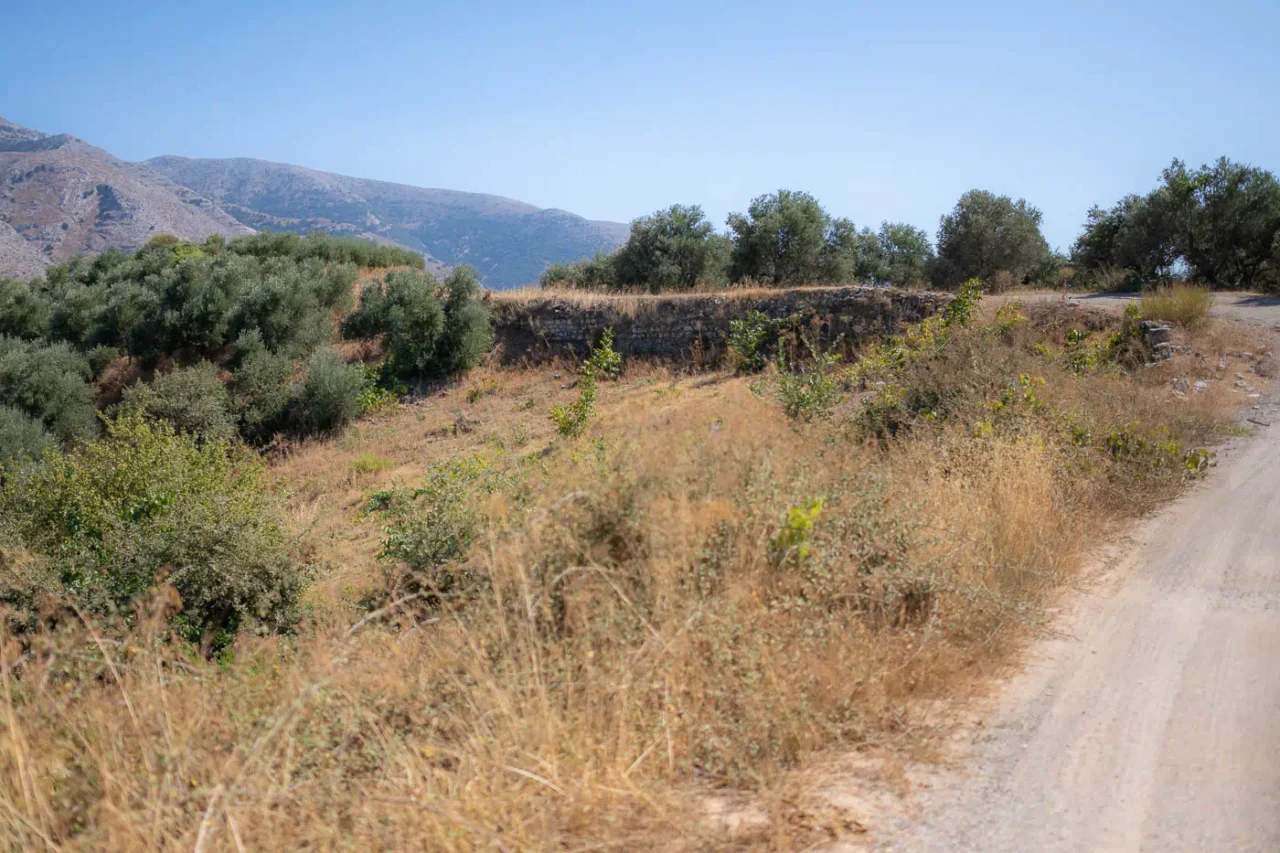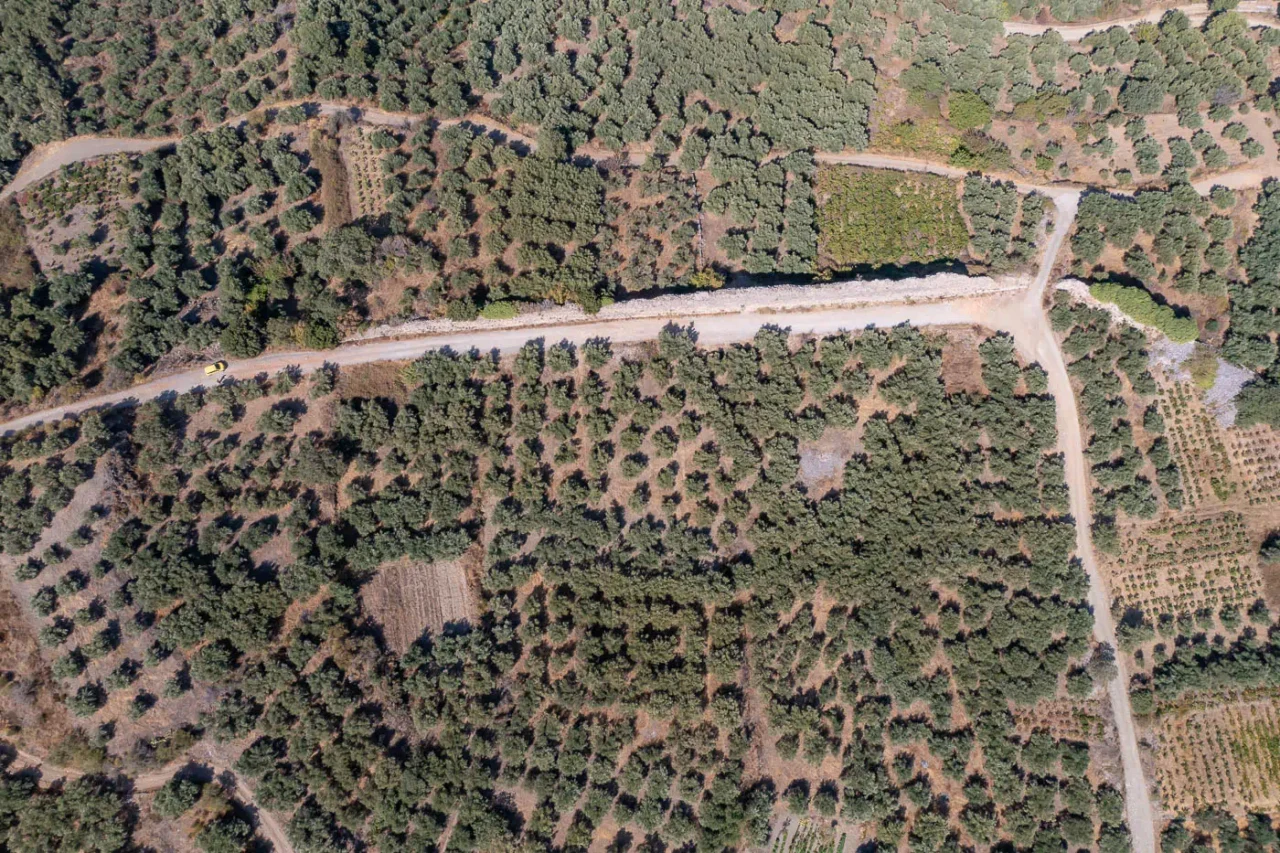


The Significance of Water in Ancient Civilizations
The availability of freshwater has always been a critical factor in the development and prosperity of human settlements. In ancient times, the ability to harness and transport water over long distances was a testament to a civilization’s technological prowess and understanding of hydraulic engineering. The Romans, renowned for their extensive network of aqueducts that supplied their cities with water, left their mark on the island of Crete with the construction of the remarkable Aqueduct of Lyttos.
Lyttos: A Flourishing Upland City
Lyttos, situated on an elevated spur in the western foothills of the Lasithi range in east-central Crete, was one of the few thriving upland Roman cities on the island. Its strategic location, overlooking the Pedhiadha plain and controlling the main pass into the Lasithi plateau, gave it a commanding position over a vast agricultural region. The city’s prosperity was largely due to its fertile hinterland, which produced wines that were highly sought after in the Roman Empire.
Despite its advantageous position, Lyttos’s elevated location presented a significant challenge for its water supply. The Romans, however, rose to the occasion, employing their engineering expertise to construct an aqueduct that would ensure the city’s continued growth and prosperity.
The Aqueduct of Lyttos: A Feat of Engineering
The Aqueduct of Lyttos, stretching approximately 22 kilometers, was a remarkable feat of engineering for its time. Its source was located on the west side of the Nissimos Plateau, a few kilometers south of the village of Krasi, at an altitude of over 600 meters. The aqueduct’s route followed the contours of the steep west-facing slopes of the Lasithi mountain range, utilizing gravity to transport water to the city.
The aqueduct’s construction involved a combination of rock-cut channels, masonry revetments, and free-standing substructure walls. In areas where the limestone massif was too steep to build any type of substructure, a terrace was cut into the bedrock, and a channel was carved along its inner edge. In other sections, the channel was supported by a constructed wall or revetment.
The most impressive part of the aqueduct was its elevated section, known locally as “O Toikhos,” which traversed a lower-rising ridge connecting the mountain range to the Lyttos hill. This section featured a free-standing substructure wall that reached a height of over 8 meters in some places, showcasing the Romans’ mastery of construction techniques.
Overcoming Challenges: The Inverted Siphon
One of the most significant challenges faced by the engineers was the need to transport water across a deep valley. To overcome this obstacle, they employed an ingenious solution: the inverted siphon. This system allowed water to be pushed up the far side of the valley using pressure, eliminating the need for a costly and impractical bridge.
Evidence for the use of an inverted siphon at Lyttos comes from the discovery of a stone pipe near the aqueduct’s substructure wall. Stone water-pipes were essential components of inverted siphons, and their presence at Lyttos strongly suggests that this technology was employed here.
The Lyttos Aqueduct in Context: Roman Aqueducts in Crete
The Aqueduct of Lyttos was just one of several Roman aqueducts built on the island of Crete. Other notable examples include the aqueducts of Chersonisos, Gortys, Syia, and Minoa. These aqueducts, like the one at Lyttos, were built to supply water to cities and towns, ensuring their growth and prosperity.
The Romans’ ability to construct aqueducts in diverse terrains, from coastal plains to rugged mountains, is a testament to their engineering skills and adaptability. They utilized various construction methods and materials, including rock-cut channels, masonry, and clay pipes, to overcome the challenges posed by the Cretan landscape.
Legacy and Lessons
The Roman aqueducts of Crete, including the Aqueduct of Lyttos, stand as enduring monuments to the ingenuity and resourcefulness of ancient engineers. These structures, built centuries ago, continue to fascinate and inspire us today. They remind us of the importance of water management and the challenges faced by ancient civilizations in securing a reliable water supply.
The study of these aqueducts provides valuable insights into Roman engineering practices and their understanding of hydraulics. By examining these structures, we can learn from their successes and failures, applying these lessons to modern water management challenges.
The Roman aqueducts of Crete also serve as a reminder of the importance of preserving our cultural heritage. These ancient structures, which have withstood the test of time, are valuable resources for understanding the past and appreciating the achievements of our ancestors.
Archaeological Site: Key Points
- Construction Period: Roman Imperial period (likely 2nd century AD)
- Location: Near the ancient city of Lyttos, east-central Crete
- Dimensions: Approximately 22 kilometers in length
- Historical Significance: Supplied water to the elevated city of Lyttos, enabling its growth and prosperity
- Current Status: Partially preserved, with visible sections of the aqueduct’s substructure and channel
References
- Angelakis, A.N.; Christodoulakos, Y.; Tzanakakis, V.A. Roman Aqueducts in Crete, Greece: Learning From the Past. Water 2021, 13, 1069. https://doi.org/10.3390/w13081069
- Kelly, Amanda. “A Roman Aqueduct through the Cretan Highlands – Securing the Water Supply for Elevated Lyttos.” Archaeopress, 2018, Archaeopress Roman Archaeology, 35.
She started at the lake, then I continued to a small town at over 2000 meters. From there we reached a shepherd, then we went to the high plateau.
We spent lunch in a taverna before the tour included the old plane tree, then we went back to the starting point.
Crete has a really great landscape to offer there.
Πρόκειται για το υδραγωγείο της αρχαίας Λύκτου. Τεράστιο έργο για τα δεδομένα της εποχής. Οι κάτοικοι της πόλης με το τόσο φωτεινό όνομα (Λύκτος - πόλη του φωτός) διψούσαν. Έβαλαν, λοιπόν, μπροστά τους ένα μεγαλόπνοο σχέδιο: να φέρουν νερό από απόσταση 22 χιλιομέτρων, από μια πηγή κοντά στο Κράσι! Έχτισαν γιγάντιους τοίχους, σκάλισαν βράχους, πέρασαν μέσα από γκρεμούς και λαγκάδια, μελέτησαν τις υψομετρικές διαφορές για να κυλά ομαλά το νερό. Και, φυσικά, τα κατάφεραν! Με λίγα λόγια: Δεν υπάρχει τοίχος παντού. Όπου υπήρχαν βραχώσεις πλαγιές δεν χρειαζόταν τοίχος. Εκεί σκάλιζαν τους βράχους. Κι έφτιαχναν σωλήνες με πέτρες (!) για να μη μολύνεται το πολύτιμο νερό από τις ακαθαρσίες των ζώων. Το κέντρο της αρχαίας πόλης βρισκόταν δυτικότερα.
Τον ξέρω από παιδί......το σινικό τείχος της Κρήτης(!) Δεν είχα ξανακούσει τότε πως υπήρχε και... σινικό τείχος. Οι παλιοί λέγανε πως το είχανε χτίσει Κύκλωπες και Σαραντάπηχοι
Access
Easily accessible from Kastamonitsa. The aqueduct follows an earth road towards Lyktos.


There are no comments yet.